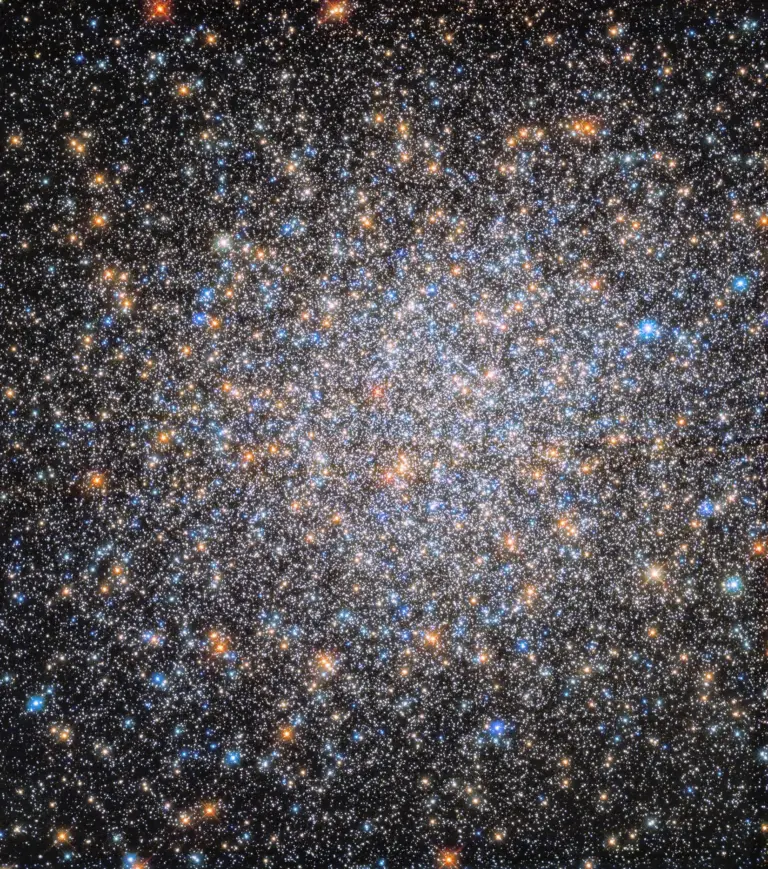The best of both worlds
Recognize the Pillars of Creation? The Pillars of Creation at its best view. Two of the James Webb Space Telescope’s images — one taken in near-infrared light and the other in mid-infrared — were fused together for a new take on a familiar classic. This composite sets the star-forming region ablaze with fresh details.
Look for thousands of nearly formed stars, looking like bright orange-red spheres that lie at the edges of the dusty pillars. Stars primarily show up in near-infrared wavelengths, so this is the work of Webb’s near-infrared camera (NIRCam).
Meanwhile, Webb’s mid-infrared instrument (MIRI) is all about dust. That’s clearest in the layers of diffuse, orange dust draping the top of the image. The densest regions of dust are cast in deep indigo hues, obscuring our view of the activities taking place inside the dense pillars. Dust is a major ingredient of star formation, one the reasons why the region is overflowing with stars.
Credits: NASA, ESA, CSA, STScI with image processing by Joseph DePasquale (STScI), Alyssa Pagan (STScI), Anton M. Koekemoer (STScI).

What better way to mark FriendsDay than with this new view? One of Hubble’s most iconic shots now has a complementary companion from our friend NASA’s James Webb Space Telescope!
This Hubble image shows the Pillars of Creation, a star-forming region in the Eagle Nebula, in visible light. It highlights the presence and thickness of interstellar dust surrounding these pillars. Infrared light can peer through that dust, as seen in Webb’s new image which unveils more stars.
The Pillars of Creation reside about 6,500 light-years away. Hubble image credits: NASA, ESA/Hubble and the Hubble Heritage Team
Advertisements
Webb image credits: Science: NASA, ESA, CSA, STScI, Hubble Heritage Project (STScI, AURA); Image Processing: Joseph DePasquale (STScI), Anton M. Koekemoer (STScI), Alyssa Pagan (STScI)

Journey with us through Webb’s breathtaking view of the Pillars of Creation, where scores of newly formed stars glisten like dewdrops among floating, translucent columns of gas and dust.
If this majestic landscape looks familiar, you may recognize the original. NASA’s Hubble Space Telescope first captured the Pillars of Creation in 1995 and revisited it in 2014. Webb’s latest view was taken in near-infrared light, which is invisible to our eyes. Seeing in infrared allows Webb to pierce through the dust and reveal stars galore. (Find a side-by-side comparison of the Pillars of Creation as seen by Hubble and Webb in our comments!)
Why go back to where we’ve been before? Webb helps us identify far more precise counts of newborn stars, along with the quantities of gas and dust. This will deepen our understanding of how stars form and burst out of these dusty clouds over millions of years.
Image Credit: NASA, ESA, CSA, STScI

Advertisements



